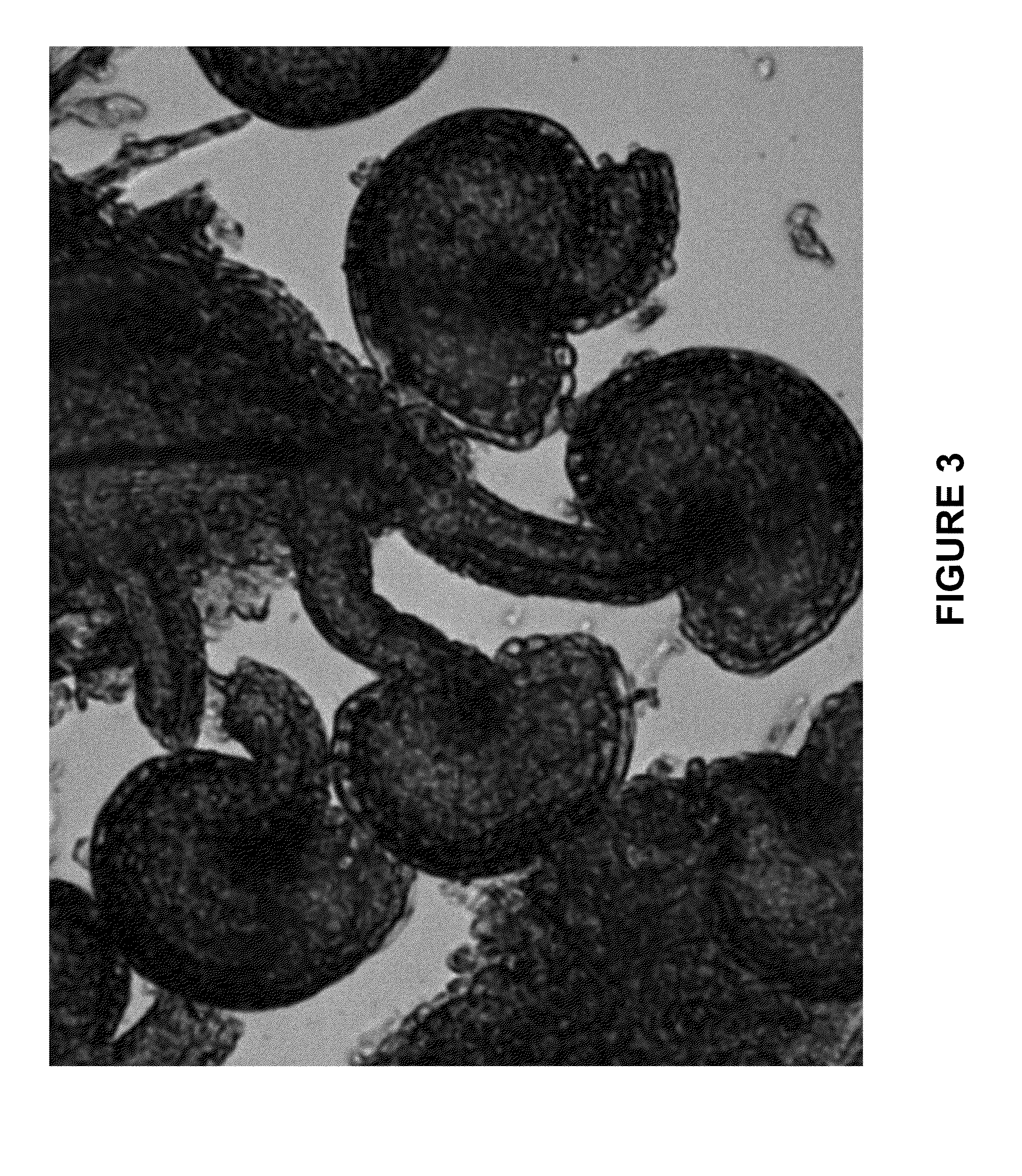Methods and Compositions for Modulating Expression or Activity of a RKD Polypeptide in a Plant
a polypeptide and rkd technology, applied in the field of plant molecular biology, can solve problems such as the expression of developmental specific genes, and achieve the effect of increasing the activity/level of a rkd polypeptid
- Summary
- Abstract
- Description
- Claims
- Application Information
AI Technical Summary
Benefits of technology
Problems solved by technology
Method used
Image
Examples
example 1
Activity of the AT NUC1 Modified Promoter (ALT1)
[0160]PHP42329 was created to test the expression pattern of the AT-NUC1 PRO (ALT1) with a GUS reporter. Expression was found exclusively in the ovule and predominantly in the micropylar end. Expression also appeared to occur in the inner integuments. The results also indicated that expression is confined to the ovule very early in seed development and can be seen internally in the gynoecium. See, FIG. 1.
[0161]Further more detailed work confirmed that expression was specific in the inner integument at the micropylar end prior to fertilization as early as the 4-8 nucleate stage of embryo sac development. The results further indicated that most ovules show GUS expression at their chalazal end at later stages of development. By the late globular stage, expression is still significant at the micropylar end of the ovule, but expression has moved to the chalazal end as well. At the heart-shaped embryo stage, a significant portion of expressi...
example 2
Activity of the Expression Cassette Comprising the AT-CYP86C1 Promoter Linked to DS-Red Reporter (PHP43541)
[0163]PHP43541 was created to test the expression pattern of the AT-CYP86C1 promoter with a RED fluorescent protein reporter. The promoter AT CYP86C1 (AT1G24540) demonstrates an expression pattern in the micropylar tip of the inner integument surrounding the micropylar half of the embryo sac in the egg stage. The outer integument at the extreme micropylar end of the outer integuments also show expression. Expression appears present from several days before pollination to several days after pollination. During development from the zygote stage to the late globular embryo stage, expression progressively spreads through the endothelial layer (innermost layer of the inner integument) towards the chalazal end of the ovule. By the heart-shaped embryo stage, the entire endothelial layer shows expression (FIGS. 2 through 10).
example 3
Activity of the Expression Cassette Comprising the AT-PPM1 Promoter Linked to ZS-GREEN (PHP48047)
[0164]The promoter AT PPM1 (AT5G49180) demonstrates two different types of expression patterns. First the AT-PPM1 promoter demonstrates an expression pattern in the extreme micropylar end of the inner and outer integuments, but not the epidermal layer of the outer integument. The second type of expression pattern is an extension of the first. Not only does the extreme micropylar inner and outer integuments (except for the epidermal layer) show expression, but expression extends chalazally to completely surround the entire embryo sac. The chalazal nucellus does not show expression (FIG. 11).
PUM
| Property | Measurement | Unit |
|---|---|---|
| Fraction | aaaaa | aaaaa |
| Fraction | aaaaa | aaaaa |
| Fraction | aaaaa | aaaaa |
Abstract
Description
Claims
Application Information
 Login to View More
Login to View More - R&D
- Intellectual Property
- Life Sciences
- Materials
- Tech Scout
- Unparalleled Data Quality
- Higher Quality Content
- 60% Fewer Hallucinations
Browse by: Latest US Patents, China's latest patents, Technical Efficacy Thesaurus, Application Domain, Technology Topic, Popular Technical Reports.
© 2025 PatSnap. All rights reserved.Legal|Privacy policy|Modern Slavery Act Transparency Statement|Sitemap|About US| Contact US: help@patsnap.com



